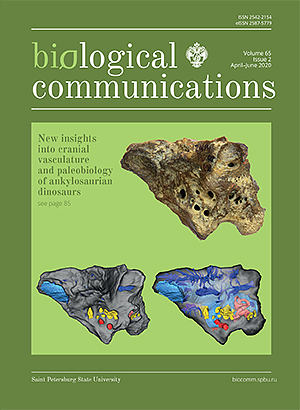Proteins of penial mamilliform glands in closely related Littorina species (Mollusca, Caenogastropoda): variability and possible contribution to reproductive isolation
DOI:
https://doi.org/10.21638/spbu03.2020.206Abstract
The forces driving reproductive isolation emergence during the process of sympatric speciation are still intensely debated. Mechanisms of gametic isolation (which are known to form rapidly in several models) take the central place in these debates. Nevertheless, the approximative capacity of a few investigated models to other taxa could be questioned, generating demand for the adoption of additional model organisms to study sympatric speciation. The group of closely related species of the genus Littorina (subgenus Neritrema) sympatrically inhabiting seashores are promising. In this study, we performed comparative proteomic analysis of penial tissues of four Neritrema species to identify potential effectors contributing to gametic isolation. Among 272 analyzed proteins, 13 mamilliform gland-specific proteins (possibly transferred to the female during copulation) were detected, as well as five proteins specifically expressed in the epithelium of the penial basal part. Eight of these proteins were species-specific and may be involved in the maintenance of reproductive barriers.
Keywords:
Littorina, proteomics, gamete recognition proteins, mamilliform gland, reproductive isolation, gametic isolation, Mollusca, 2D-DIGE
Downloads
References
Downloads
Published
How to Cite
License
Articles of Biological Communications are open access distributed under the terms of the License Agreement with Saint Petersburg State University, which permits to the authors unrestricted distribution and self-archiving free of charge.





